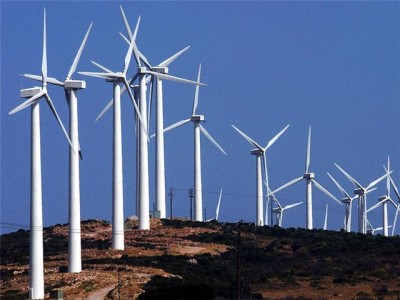California Supreme Court Upholds Regional Planning Agency’s Greenhouse Gas CEQA Analysis, and Sets Out Principles to Ensure Better Analysis in the Future
Decision Will Help Ensure Development and Transportation Planning in California Supports GHG Reduction Efforts
In May, Rick Frank posted his reflections on the oral argument in the California Supreme Court on Cleveland National Forest Association v. San Diego Association of Governments (SANDAG), and predicted that SANDAG would win the case. His prediction has proved correct with the release of the Court's opinion last week - but SANDAG's narrow win provides a lot to be cheer about for advocates and policymakers who want to ensure that new development and transportation plann...
CONTINUE READINGThere Once Was a Man From Trump Tower . . .
Some commentary of a lighter sort.
Here are a few diversions for a warm summer morning. I hope you enjoy them. A Man Called Scott Pruitt There once was a man called Scott Pruitt, Who said, “Why, there’s nothing to it! “You undo all the regs, “Cut them off at the legs, And tell all the polluters, ‘go to it!’” The Man From Trump Tower There once was a man from Trump Tower, Who longed to have absolute power. All budgets he’d slash, And t...
CONTINUE READINGThoughts on AB 398
New bill to extend state's cap-and-trade program is a compromise worth making
The Governor and state legislative leaders announced a deal on a bill to extend the state’s cap-and-trade program to control greenhouse gas emissions through 2030, along with companion legislation to increase emissions reductions for conventional pollutants from major stationary industrial sources (a key point for environmental justice groups). Some leading business groups have endorsed the plan; the Governor’s office is optimistic it will get buy in from Republica...
CONTINUE READINGA Victory for Renewables
The Second Circuit has carved out some safe space for state renewable energy programs.
An important Second Circuit ruling in June should help clarify some of the lingering legal issues about state efforts to expand renewable energy. Judge Calabresi’s opinion in Allco Finance v. Dykes rejected claims that Connecticut’s policies interfered with interstate commerce and invaded an area of exclusive federal regulation. This will be a useful precedent for defending other state programs. Both the Connecticut policies and the applicable legal doctrines are ...
CONTINUE READINGNew Research Shows California’s Cap-And-Trade Program Is Net Economic Benefit For San Joaquin Valley & Inland Empire
Results from forthcoming economic study included in new op-ed
The California Legislature may vote on reauthorizing California's cap-and-trade program as soon as Monday. The program needs a two-thirds vote to inoculate the auction mechanism to distribute allowances from legal challenges, which is a heavy political lift that has required a lot of compromise and concession. But in the midst of the debate, state legislators are lacking crucial data on the impact of the program to date on some of California's most environmentally and...
CONTINUE READINGEnergy & Climate Are Hot News
Some of it is bad news -- but despite Trump, there are many positive signs.
Climate and energy issues have been hot topics in the news. Consider yesterday’s issues of the NY Times and the Washington Post. Of course, both papers have featured coverage of the G20 conference. They emphasized that the U.S. is isolated internationally by its decision to withdraw from the Paris Agreement. Trump was unable to get any other country to support the U.S., despite heavy administration lobbying of Russia, Turkey, and Saudi Arabia. For instance, here’s wh...
CONTINUE READINGDid Trump Just Accidentally Endorse Climate Action?
There's a hidden zinger in the G-20 statement about curtailing greenhouse gases.
It escaped everyone's notice, possibly including the U.S. delegation, but buried in the G-20 Declaration is an endorsement of the need to cut greenhouse gases. This paragraph precedes the two reflecting disagreements about the Paris Agreement, and this particular paragraph purports to reflect the views of all twenty leaders, including Trump. There are three paragraphs in the G-20 Declaration that address climate change. Understandably, most of the attention has go...
CONTINUE READINGHoping New Reservoirs Will Immediately Store More Water in California? That’s Unlikely.
Emmett Institute’s Latest Pritzker Brief Looks at the Timeline and Legal Requirements for Implementing New Surface Water Storage Facilities
Surface water storage has become a hot topic in California. The recent drought led voters in 2014 to approve California’s Proposition 1 water bond, which, in part, earmarked $2.7 billion for the public benefits of storage projects. It’s very likely that at least some of that money will go to a large surface water storage project, although it could also fund groundwater storage or conjunctive use projects. Does it make sense to channel that pot of money to surface ...
CONTINUE READINGBreaking News: Coastal Commission Prevails in Major California Supreme Court Case
Justices Reject Property Owners' "Regulatory Takings" Challenge to Seawall Permit Condition
The California Supreme Court today issued its long-awaited decision in Lynch v. California Coastal Commission, rejecting a lawsuit brought by San Diego beachfront homeowners claiming that permit conditions imposed by the Coastal Commission triggered a compensable taking of their private property rights. Writing for a unanimous Court, Justice Carol Corrigan concluded that the homeowners had forfeited their right to challenge the constitutionality of the permit conditio...
CONTINUE READINGLaw professor comments on national monuments review
Leading natural resource and environmental law professors comment on Trump review of national monuments
As we've been covering here on Legal Planet, the Trump Administration is conducting a review of national monuments created over the past 20 years, and has indicated it may seek to eliminate or shrink some of those monuments. Part of that process is a public comment period. (You can comment here, deadline is July 10.) A group of 121 environmental, natural resource, and administrative law professors just submitted a comment to the Secretary of the Interior arguing th...
CONTINUE READING










